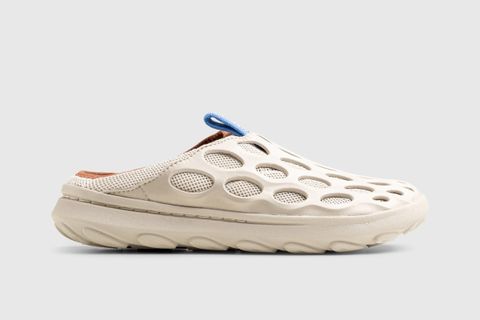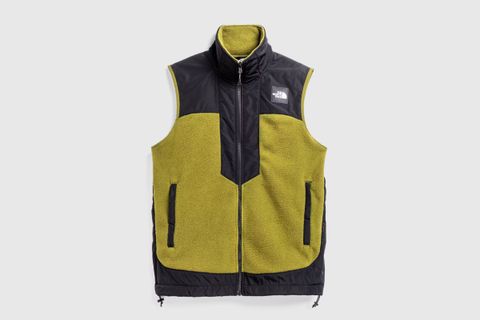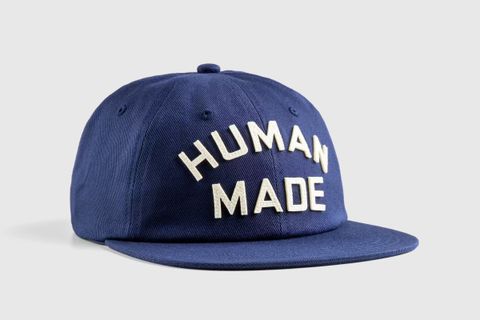At Tokyo Fashion Week, a Continuous Promise of Young Talent
Any true fashion enthusiast inevitably finds themselves in Tokyo. This city is a sartorial paradise, with a seemingly endless amount of stores and brands waiting to be discovered. Ever since Issey Miyake, Rei Kawakubo, and Yohji Yamamoto turned fashion upside down by rejecting the staid Western standards of beauty in the early ‘80s, Tokyo has been continually looked at as a source of inspiration and creativity.
And it produced no shortage of successors to that avant-garde trio, from Jun Takahashi’s UNDERCOVER to Takahiro Miyashita’s Number (N)ine and TheSoloist and Hiroki Nakamura’s visvim.
But high expectations are both a boon and a burden. Can Tokyo continuously churn out brilliant brands like Chitose Abe’s sacai and Noir by Kei Ninomiya?
I went to Rakuten Fashion Week Tokyo Fall/Winter 2024 to find out.
This was my sixth visit to Tokyo, and even though two of my past trips happened to coincide with Tokyo Fashion Week, this was the first time I got to fully take it all in. Japanese fashion designers seem to fall into two groups: those who make it on the global stage and those who seem to be content to remain successful in Japan.
The former follow in the glorious, though daunting, footsteps of Yamamoto and Kawakubo's COMME des GARÇONS. For better or worse, showing in Paris remains the pinnacle of fashion achievement, and those Japanese designers who make it there are widely esteemed (and commercially successful) back home.
Even though brands like Junichi Abe’s Kolor and Kunihigo Morinaga’s Anrealage struggle to break into the Western market, their Paris shows carry weight in Japan.
On the other hand there are brands like HYKE, whose functional, military-and-workwear-based womenswear has been enjoying a cult following in Japan since 2013; its collaborations with The North Face and adidas are met here with the enthusiasm of a Supreme drop. And yet HYKE seems ambivalent on extending its influence to the West, preferring to concentrate on the domestic market.
Over the past fifty years Tokyo has attempted to establish itself as a fashion capital, but its remoteness has always been a detriment. But this distance is also an advantage of a sort, since its very remoteness has become a magnet for the most hardcore fashion fans.
One comes here now to unearth gems that one cannot buy in London or New York. And hunting for new brands feels especially precious these days. When everything seems to exist only a few clicks away, Tokyo still offers a sense of discovery.
Tokyo Fashion Week is a compact affair. Everyone seems to know each other, its venues are mercifully concentrated in the center of town (as much as this sprawling metropolis can be thought of as having a center), and shows start more or less on time.
This is quite opposite of Paris or New York, where one spends half the day crisscrossing town, and where just getting into a show increasingly feels like storming a castle.
The same things happen in Tokyo as they do during other fashion weeks – influencers influence, photographers take pictures of carefully choreographed “street style,” and celebrities show up in what looks like gifted finery.
The main difference is that it all happens on a human scale, and therefore doesn’t feel like an irritant.
My first TFW show, by HIDESIGN, was at the Shibuya Hikarie shopping center, where many shows and presentations are held, and in retrospect it was one of my favorites.
HIDESIGN (pronounced HIDE / SIGN) is not a fashion brand in any conventional sense; rather it’s a collective of industrial designers whose main business is designing uniforms, and which has slowly morphed its practice into something more fashionable.
As any techwear enthusiast knows, Japan is where you go for the best techwear and workwear, and HIDESIGN’s grayscale tour-de-force was proof of just that. It took techwear archetypes to the nth degree, with brilliant, unexpected details such as ruching and parkas with articulated backs that could accommodate a backpack.
On some level HIDESIGN is an outlier of TFW; most of the shows are held by young designers whose brands are not yet fully fleshed out. Each generation of designers, and creatives in general, must be allowed to experiment in order to find their own creative language. But that doesn’t mean that recycling already tired trends is the way to go.
The menswear Koji Kamiya presented for his brand KAMIYA was a tribute to the formerly mean streets of Shibuya, but his uniform of oversized acid-washed jeans and big hoodies has been Balenciaga’d to death over the last ten years, and no longer feels relevant or genuine.
As for womenswear, this time there was quite a bit of sheerness on the runway from brands like Chika Kisada and Kanako Sakai.
This felt rather uncharacteristic for Japan, where women in general are not in the habit of showing skin, but in line with the current semi-nudity trend that may yet result in a more relaxed attitude of Japan’s new generation of female fashion consumers.
Speaking of trends, there was also plenty of gender fluidity at brands like Tanaka and MIKAGE SHIN, where male models sported bare male midriffs and skirts in sheer fabrics, but it was hard to say from the runway looks alone whether these designers were being sincere in their stance on gender or just playing with what’s fashionable at the moment.
None of this is an issue per say, and in sure hands these aesthetic propositions can shine. What was sometimes missing was the quality of execution.
This was especially evident when compared to a brand getting it right, the way Akiko Aoki did with a splendid show in which sheerness was a feature and not a bug. This was a collection made by someone who evidently knows her way around a garment.
Her mastery of cut and proportion was obvious, and the unabashed display of feminine elegance felt fresh against the current fashion backdrop of insincere Y2K imitations of sartorial slop.
Aoki’s show was followed by that of MURRAL, where Yusuke Muramatsu and Ayumi Sekiguchi treated deconstruction as a path to elegance.
“Sometimes I wish young designers would just make nice clothes,” sighed one fashion commentator as we went from one show to another.
As if to answer her wish, the designer Harunobu Murata did just that. Murata cut his teeth at Jil Sander, and it showed in the clothes that were elegant, grownup, and confident, in a minimalist spirit but a step above so-called quiet luxury (which, frankly, often means boring clothes).
There was a confidence of another sort at Shinya Kozuka. Kozuka’s strength is world building, which is paramount for any fashion designer working today.
This is evident not only in the playful way he combines fabrics, some of which feature his original graphics, but also in the way the clothes were styled and in the way that the presentation, held in a blue room that featured his drawings, added context to the clothes.
Speaking of presentations, Kota Gushiken, the winner of the previous Tokyo Fashion Award, put on a comedy show to contextualize the latest collection of his knitwear brand.
There were two male comics and two female models who tried on the clothes from the racks installed on stage, while engaging in what sounded like light-hearted banter.
And even though I could not understand a word, it felt like a fresh way to present the clothes; after all, laughter is a community-builder.
My last day of Tokyo Fashion Week ended on another high note. I’ve been following the designer Soshi Otsuki for the past year and his show only solidified my interest in his work. One of Otsuki’s influences is traditional Japanese dress, which he modernizes in his unique way.
He may just be the guy to follow in the footsteps of Yohji Yamamoto and Raf Simons, whose influence was evident in this collection in the all-black looks, a loose silhouette, and a cape or two.
Tokyo Fashion Week tries to bookend each edition with a big show, and this time the highlight was the menswear debut of Anrealage, whose LVMH Prize-nominated designer, Kunihiko Morinaga, is known for his technically advanced womenswear and experimentations with light-sensitive materials.
Morinaga is one of the most fascinating minds in fashion, and in Paris he continues to wow audiences the way Hussein Chalayan did in the late ‘90s. But his menswear debut lacked the same magic.
Even though the materials and construction techniques, such as a suit completely covered in buttons, showed that Anrealage can compete with the best of them, there were too many echoes of other Japanese designers like COMME des GARÇONS and Kolor, and too many ideas thrown into one pot.
Yet something tells me that a designer as talented as Morinaga will find his own voice sooner rather than later.
Tokyo Fashion Week only scratches the surface of what Tokyo the city has to offer in terms of fashion, as some brands do only digital presentations, and others don’t show at all. It is in Tokyo’s shops where much action happens, as Nick Wooster, a Tokyo Fashion Week veteran attendee, pointed out during an interview with the Japanese fashion press.
Two of the brands I keenly follow, HYKE and TAKAHRIOMIYASHITATheSoloist, did not put on physical shows at TFW, which would have added weight to the event.
Nonetheless, taking stock of what I saw over the course of the week, I can say that Tokyo continues to be one of the most exciting fashion cities from which young talent continues to emerge.


